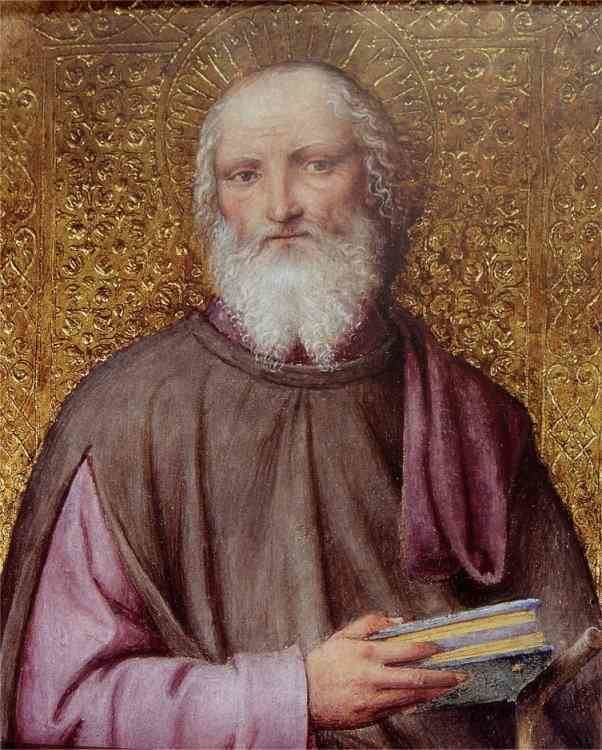Feast 6 June | Name Gerardo Tintori | |
 | ||
Attributes Stick with cherries, bowl with spoon Died June 6, 1207, Monza, Italy | ||
Monza via gerardo dei tintori
Saint Gerardo dei Tintori or Tintore (1134(?) – 6 June 1207) is a saint of the Catholic Church, joint patron saint (with Saint John the Baptist) of Monza in Italy, where he is particularly noted as the founder of a hospital.
Contents
- Monza via gerardo dei tintori
- Monza Intervento del Presidente Mattarella allOspedale San Gerardo dei Tintori
- Biography
- After Death
- Worship and tradition
- Miracles
- References

Monza: Intervento del Presidente Mattarella all'Ospedale San Gerardo dei Tintori
Biography
Gerardo's year of birth is not known with certainty: according to the Monza historian Bartolomeo Zucchi, it was 1134; according to others, 1135 or 1140. The name "Tintore" or "dei Tintori" (Latin: de Tinctoribus) means "dyer" or "of the dyers" and very probably refers to the occupation of his family, which was wealthy but not noble.
After the death of his father, Gerardo used his inheritance to found a hospital for the aid of the poor and sick. The hospital was apparently established in Gerardo's own house, which stood on the left bank of the River Lambro, near the bridge now called "San Gerardino" and the church of the same name.
The foundation of the hospital had certainly taken place by 1174. In this year Gerardo made an agreement with the authorities of the city of Monza and with the chapter of Monza Cathedral to define the legal and administrative status of the hospital: it was to depend formally on ecclesiastical authority, but in fact maintained substantial autonomy, while the municipal authority assumed the avvocazia (the protection of the hospital at law).
The hospital services were provided by lay brothers, who lived together in the same way as monks but without taking religious vows. Gerardo himself was a lay brother and also held the post of "minister", or director of the hospital. As appears from later documents, he retained this post until his death on 6 June 1207.
After Death
Gerardo was initially buried in the churchyard of the nearby church of St. Ambrose (now the church of San Gerardo al Corpo), but his body was exhumed forty days later at the insistence of the population of the nearby town of Olgiate Comasco and placed in a sarcophagus next to the altar of the church. In 1740, the sarcophagus was replaced by a crystal urn with silver decorations, inside which the skeleton of Gerardo is visible to the faithful. The urn is now kept in a chapel at the far end of the south transept.
Gerardo's hospital continued his work until the 18th century, when the Austrian government merged it with the city's other health institutions. In 1946, the municipal authorities of Monza decided to commemorate his achievements and named the City Hospital after him, which had been built in the 19th century and formerly bore the name of King Umberto I. The new hospital built later, which also houses the Faculty of Medicine of the University of Milan-Bicocca, has kept the dedication to Saint Gerardo.
Worship and tradition
The veneration of Gerardo began soon after his death: he is called "blessed" in a document of 1230, and "holy" or "saint" in one of 1247. Saint Charles Borromeo, after making an investigation, officially confirmed the cultus in 1583. Monza has three churches dedicated to him: San Gerardo al Corpo; San Gerardino, also known as San Gerardo Intramurano; and Sancto Gherardo.
Saint Gerardo is invoked especially by sick and pregnant women. The traditional iconography represents him as an old bearded man, dressed in a tunic, with a staff from which hangs a bunch of cherries and at his feet a basket with bread, wine and eggs, or a bowl with a spoon, symbolizing his attempts to help the poor and the sick.
His liturgical memorial, inscribed in the calendar of Archdiocese of Milan, is 6 June, which is also the anniversary of his death. On this date, Monza celebrates his feast as the city's patron saint in the church of San Gerardo al Corpo, while at the nearby bridge of San Gerardino a festival takes place which prominently features stalls selling cherries, traditional iconographic attributes of the saint. A few meters upstream from the bridge, the statue of Saint Gerardo, standing on his cloak, is placed in the river, in memory of the most famous miracle attributed to him.
Miracles
The traditions about Saint Gerardo, which are still well known in the city of Monza, were written down for the first time by the historian Bonincontro Morigia, who, a hundred years after Gerardo's death, was able to collect the testimonies of the people, according to which Saint Gerardo performed many miracles during his life and many others were attributed to his intercession after his death. The investigation ordered by Saint Charles Borromeo recognized over twenty, including the following:
